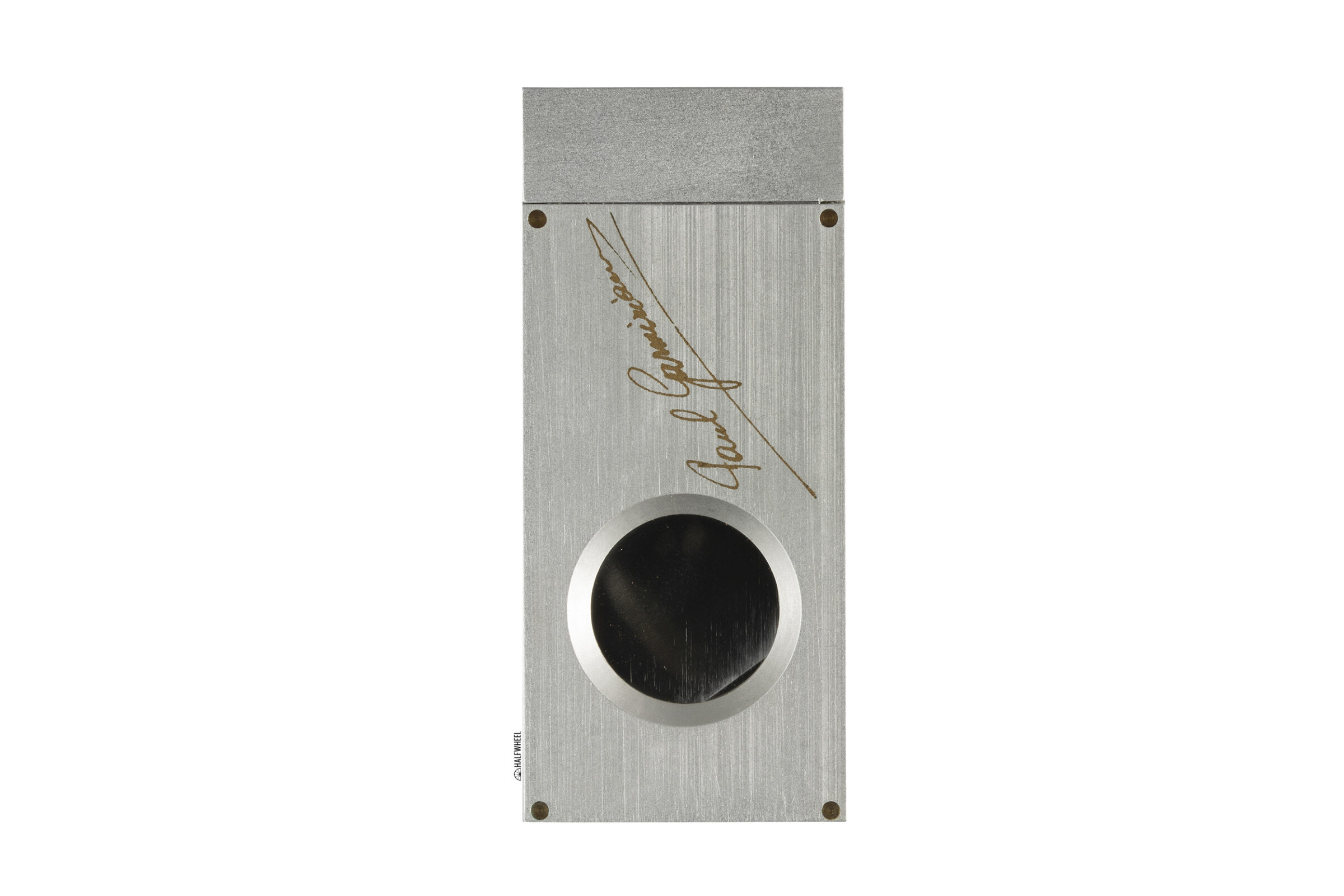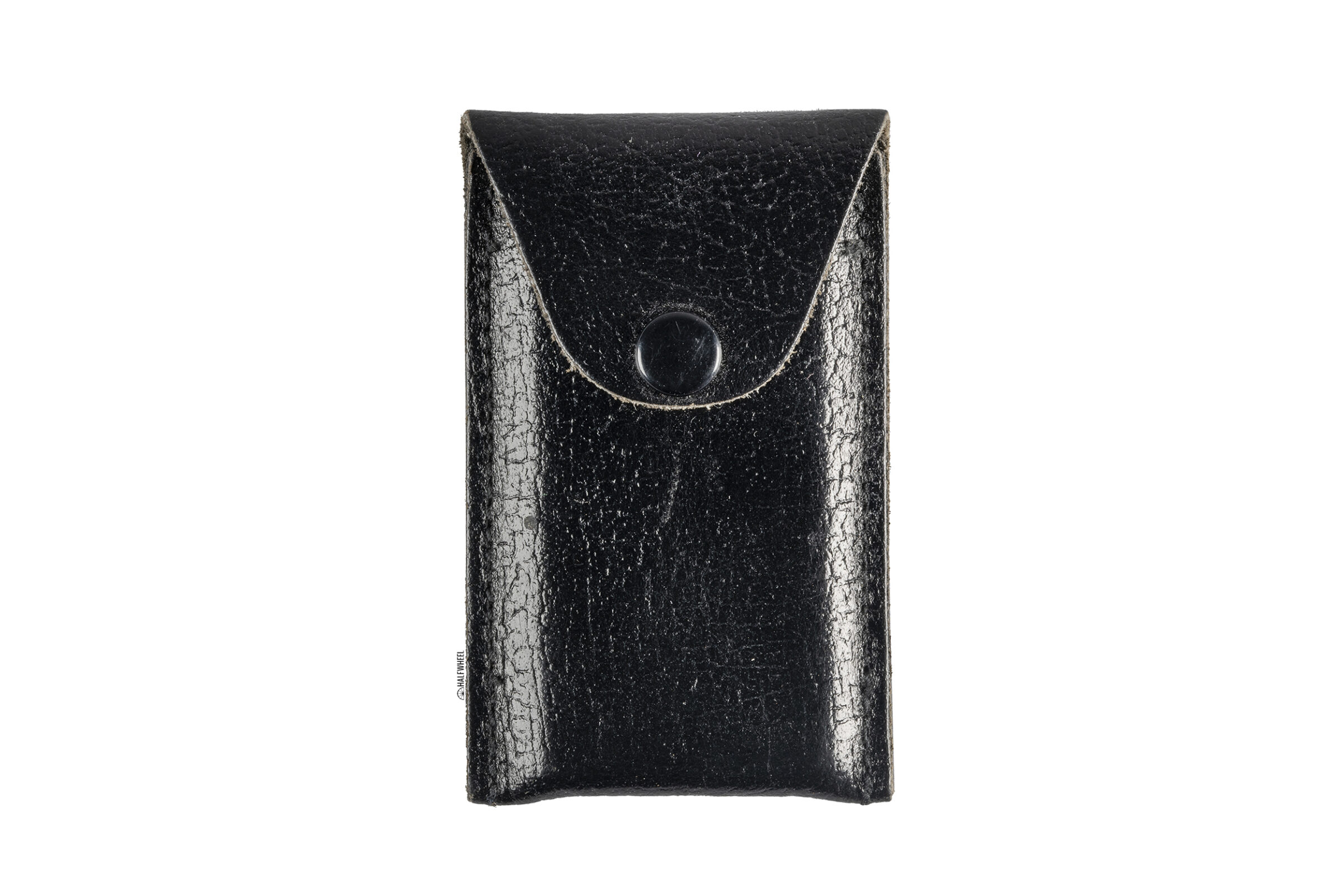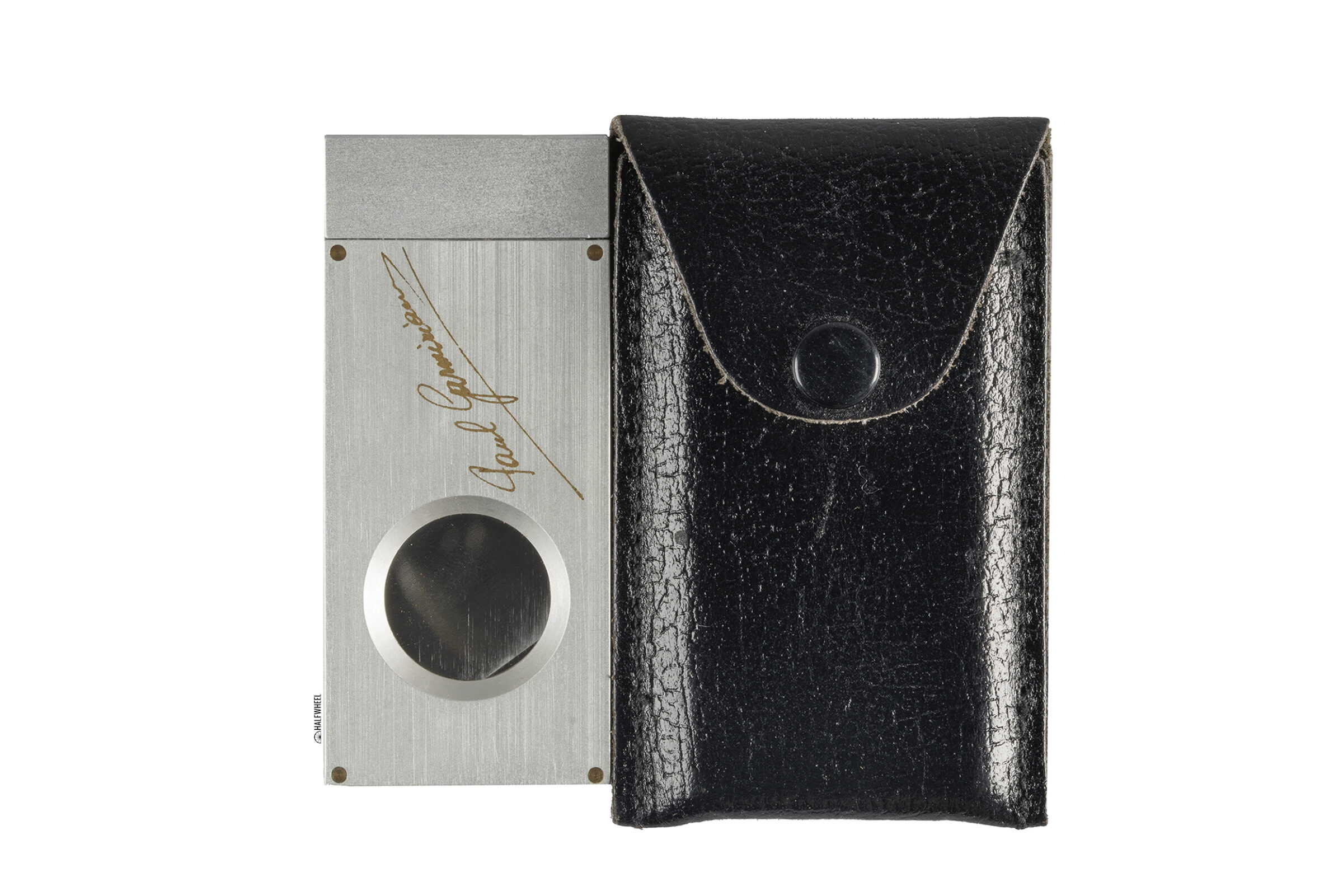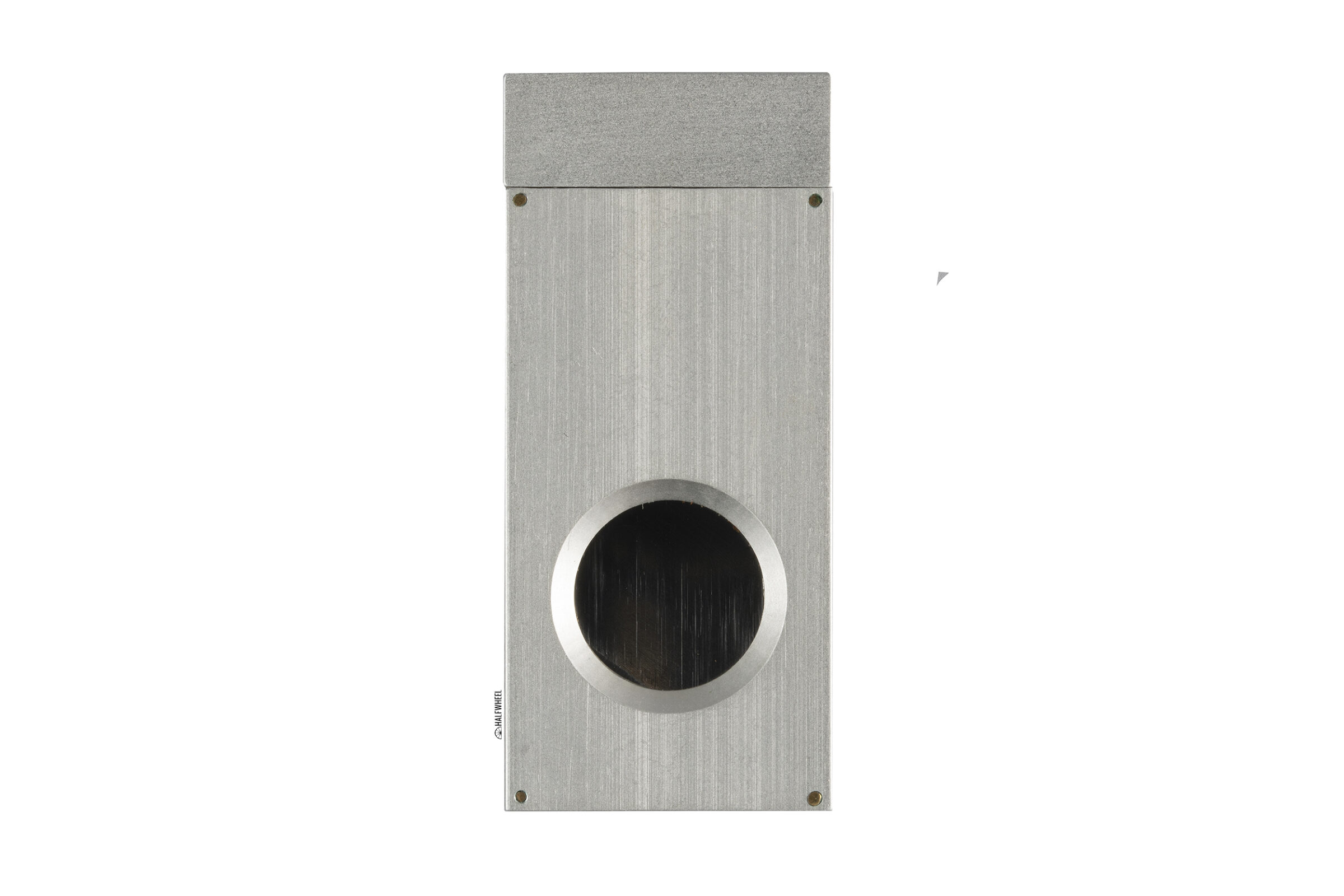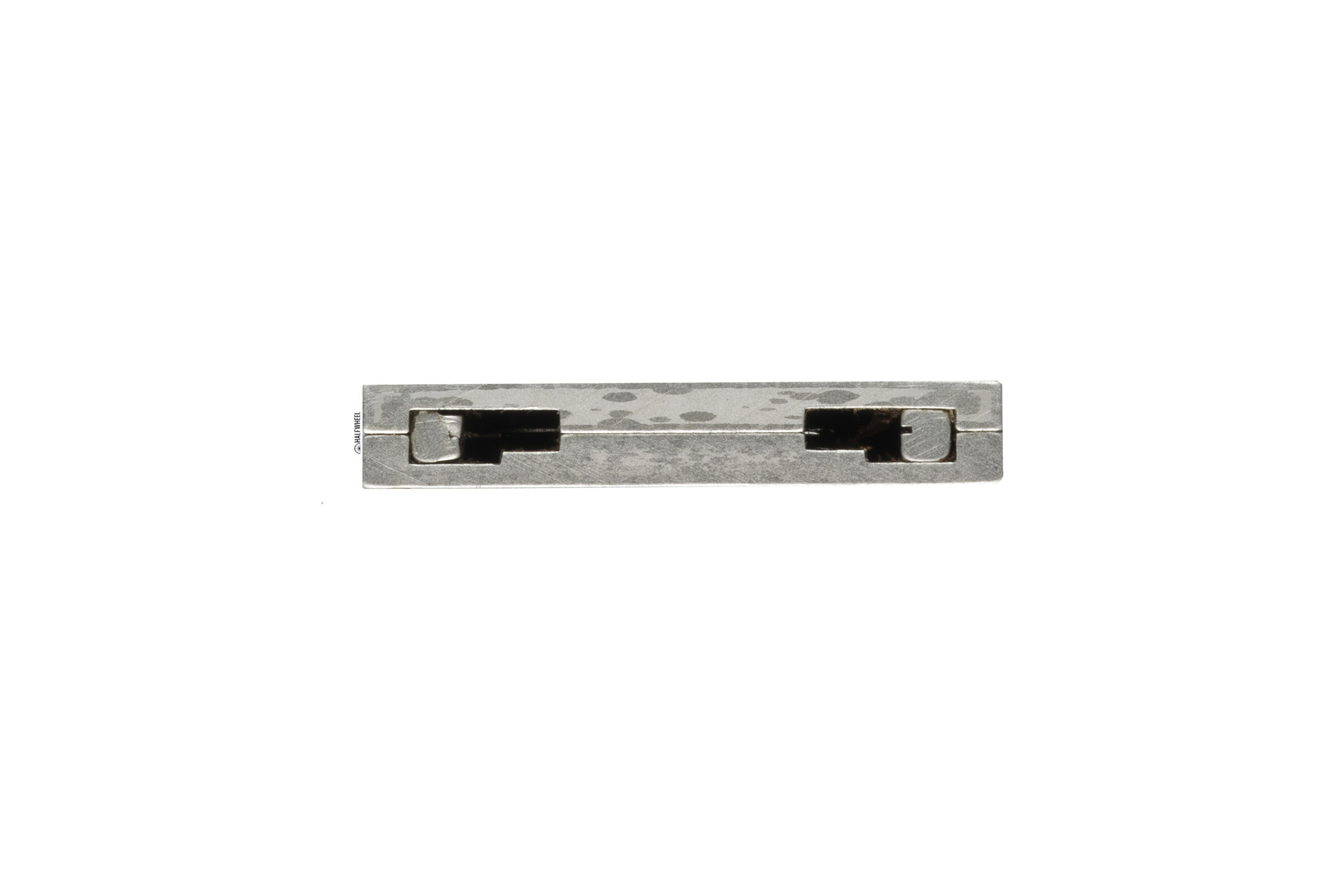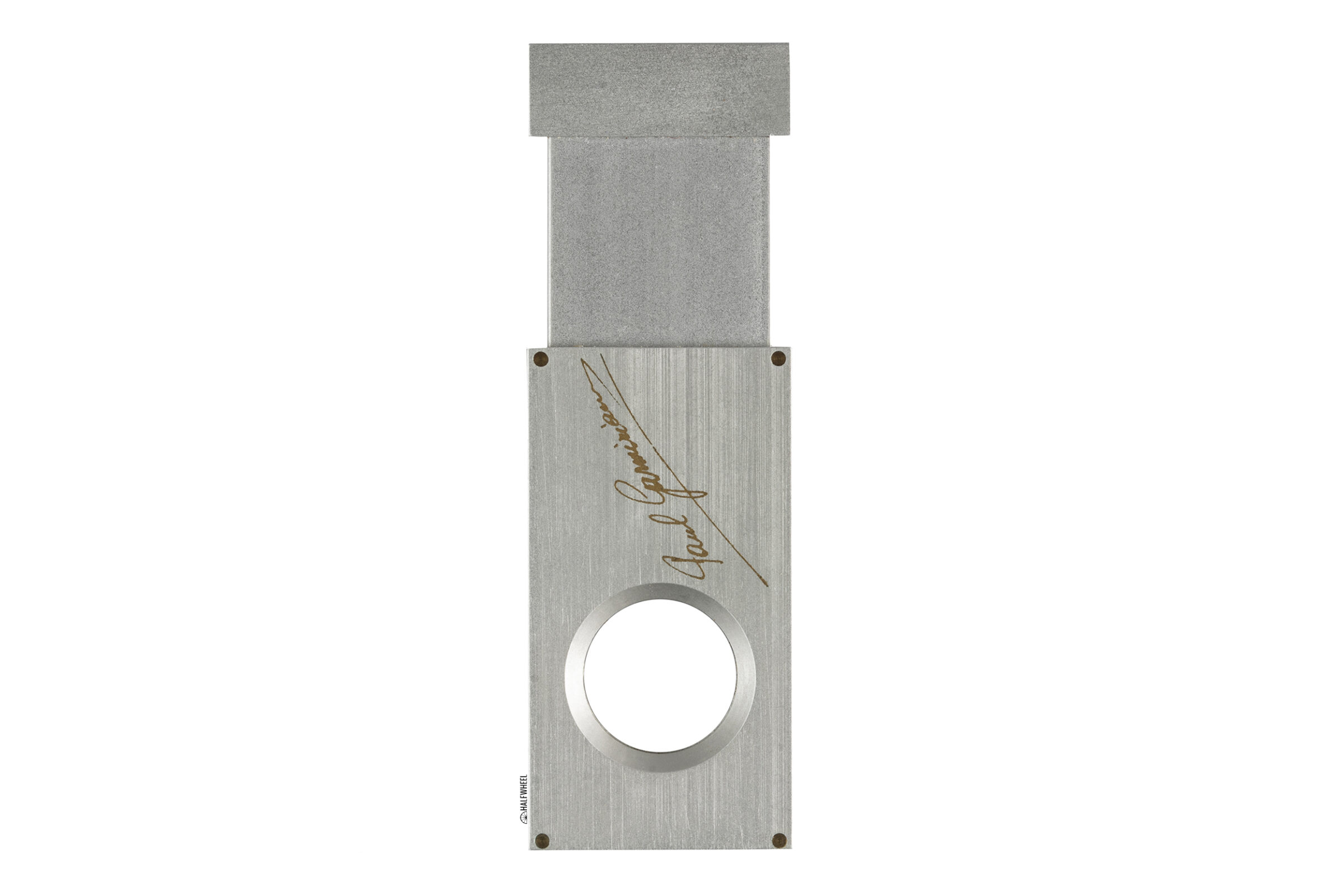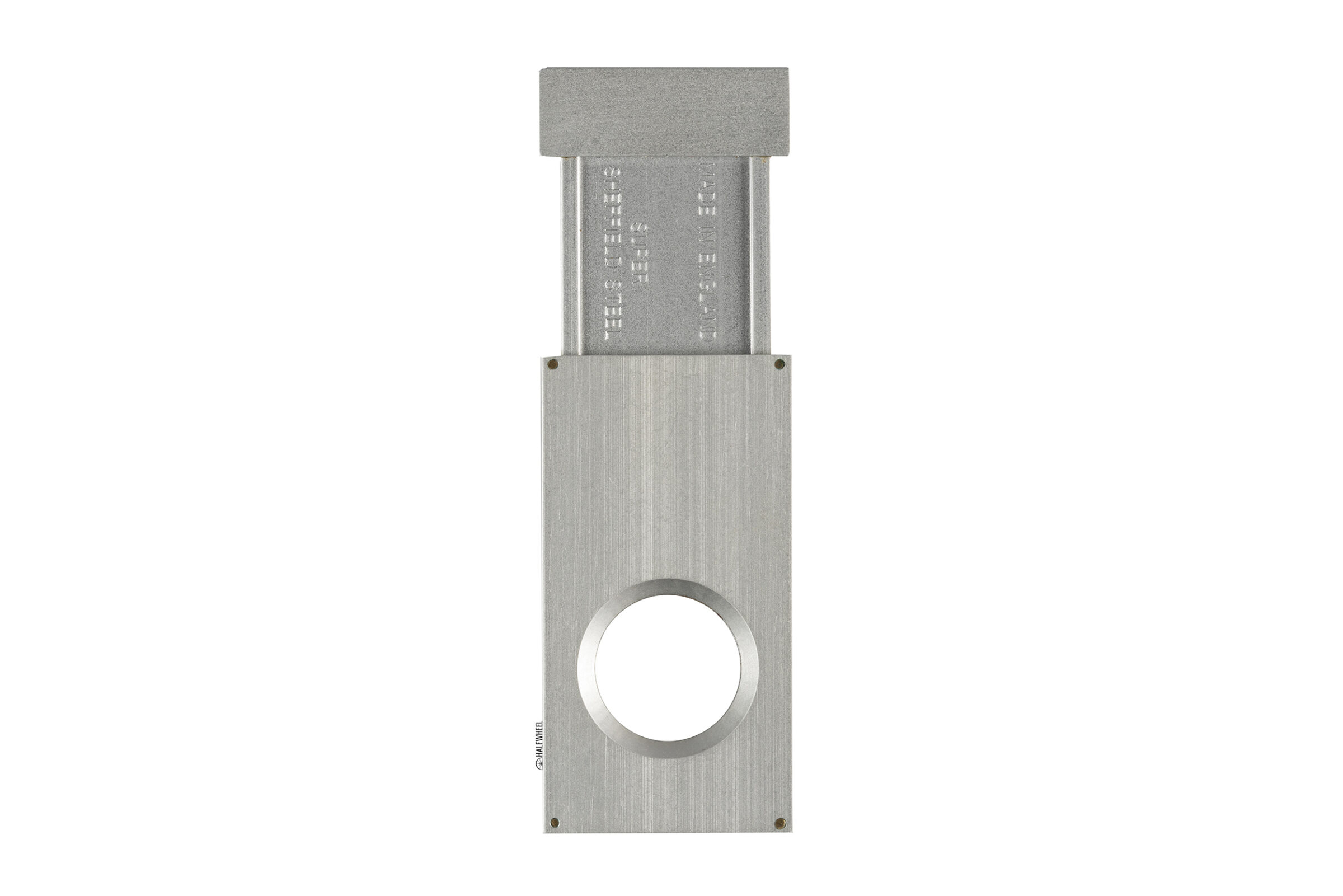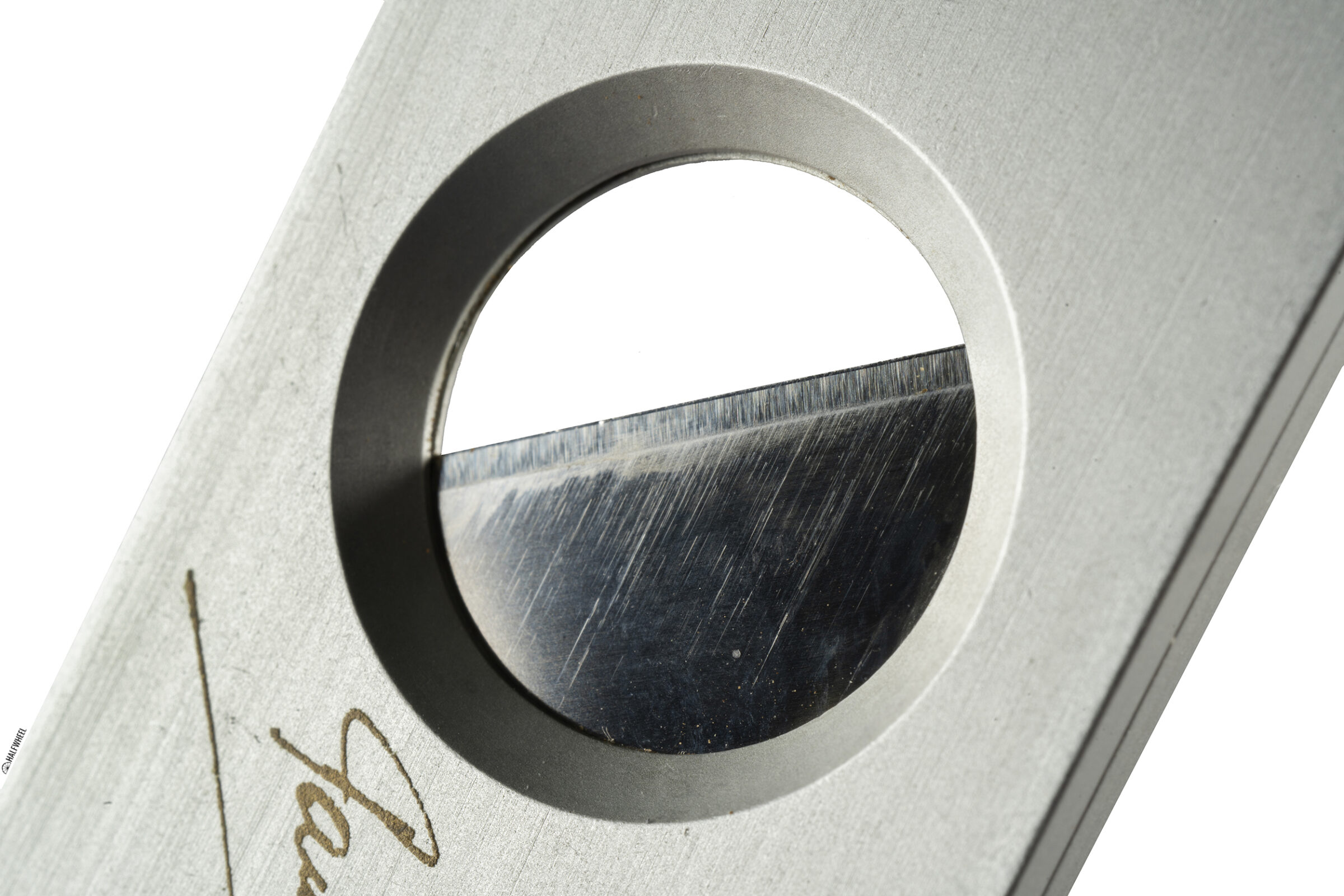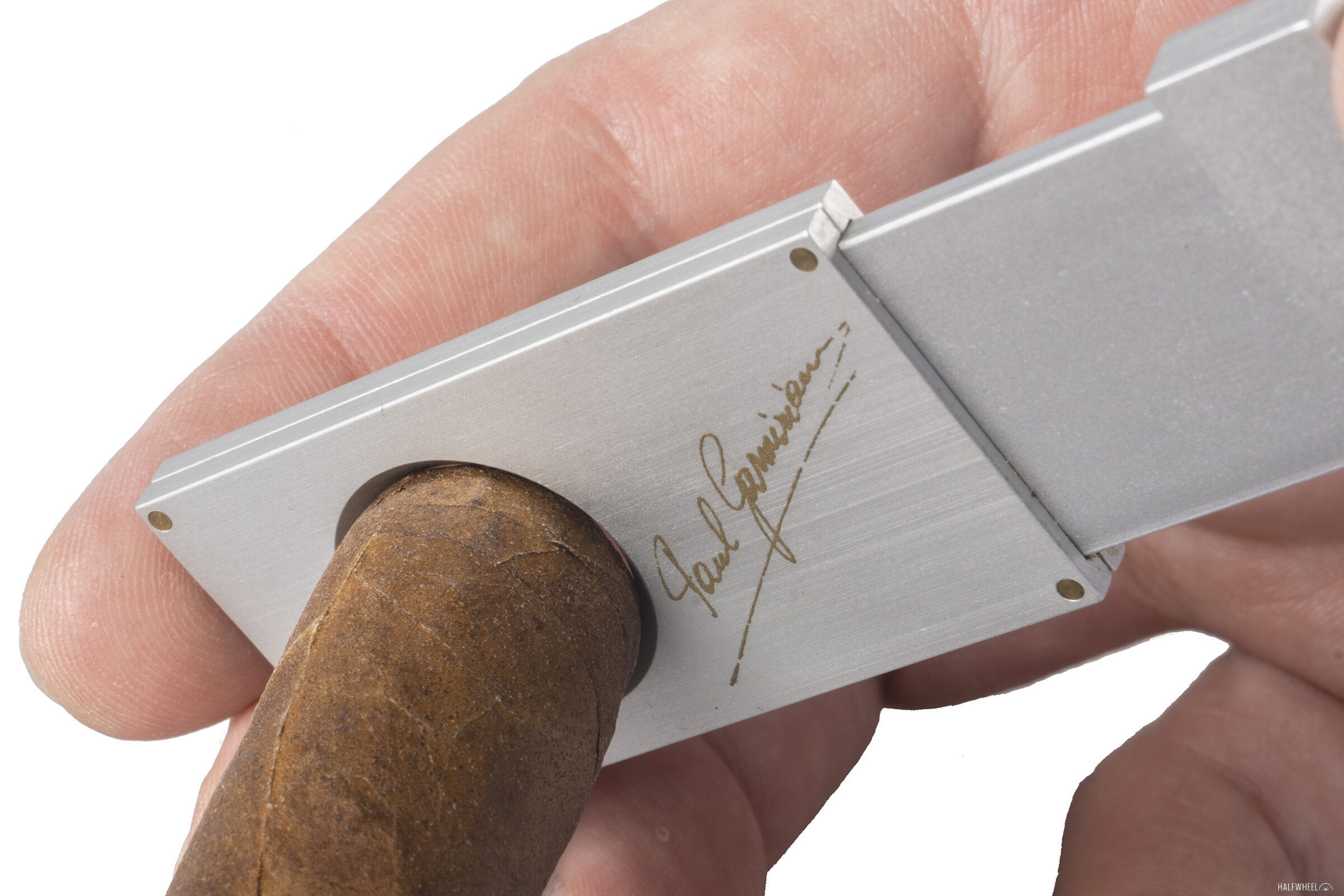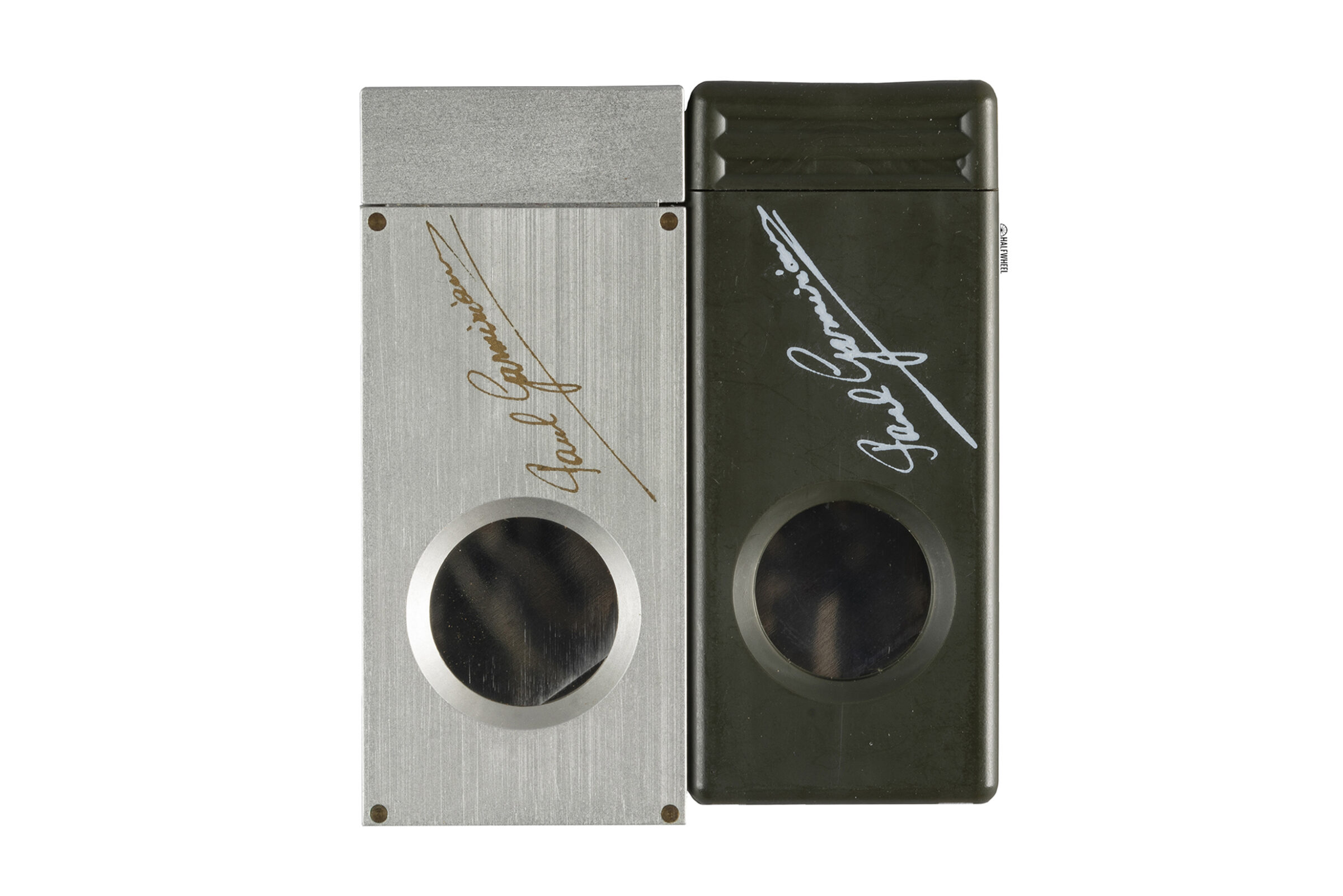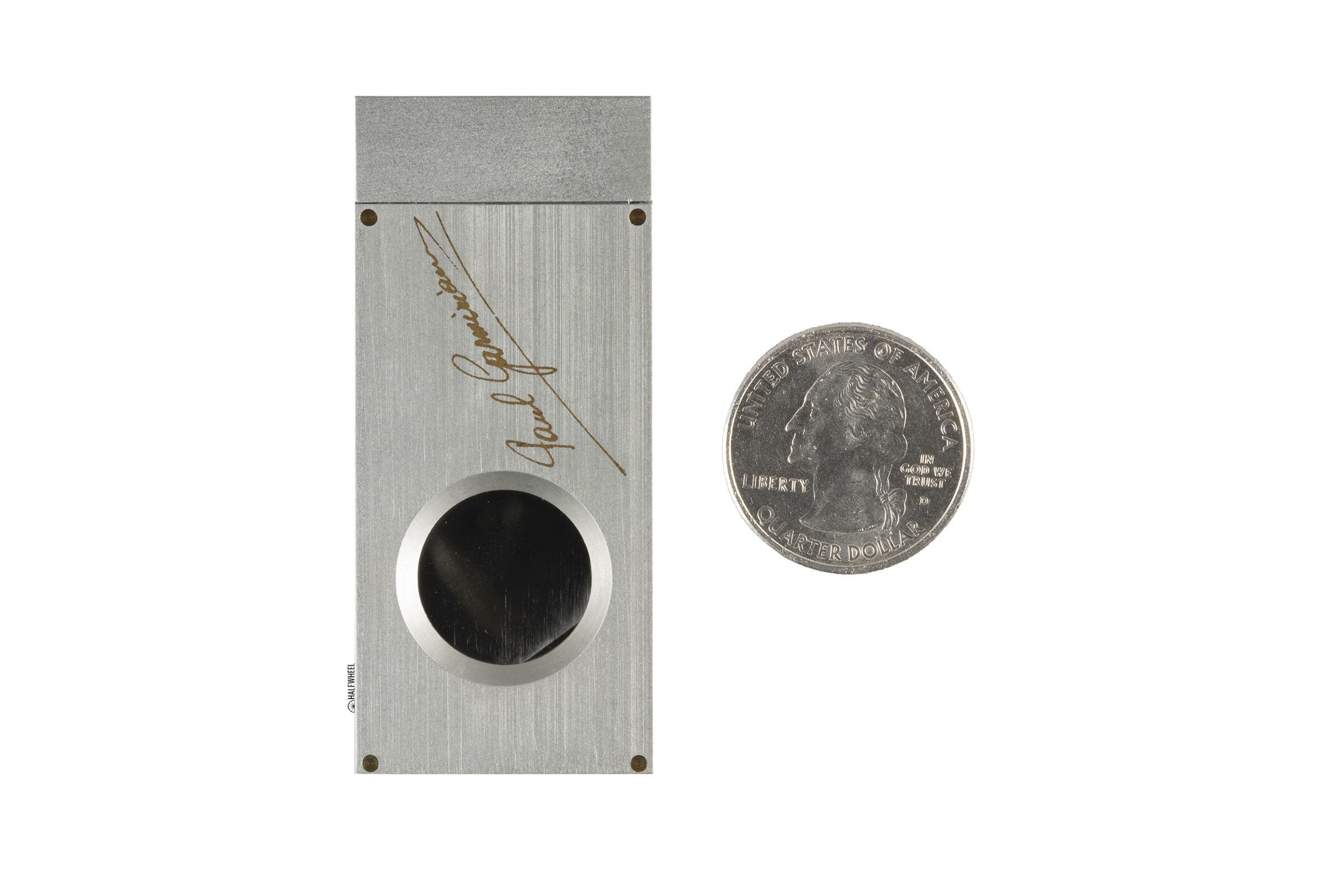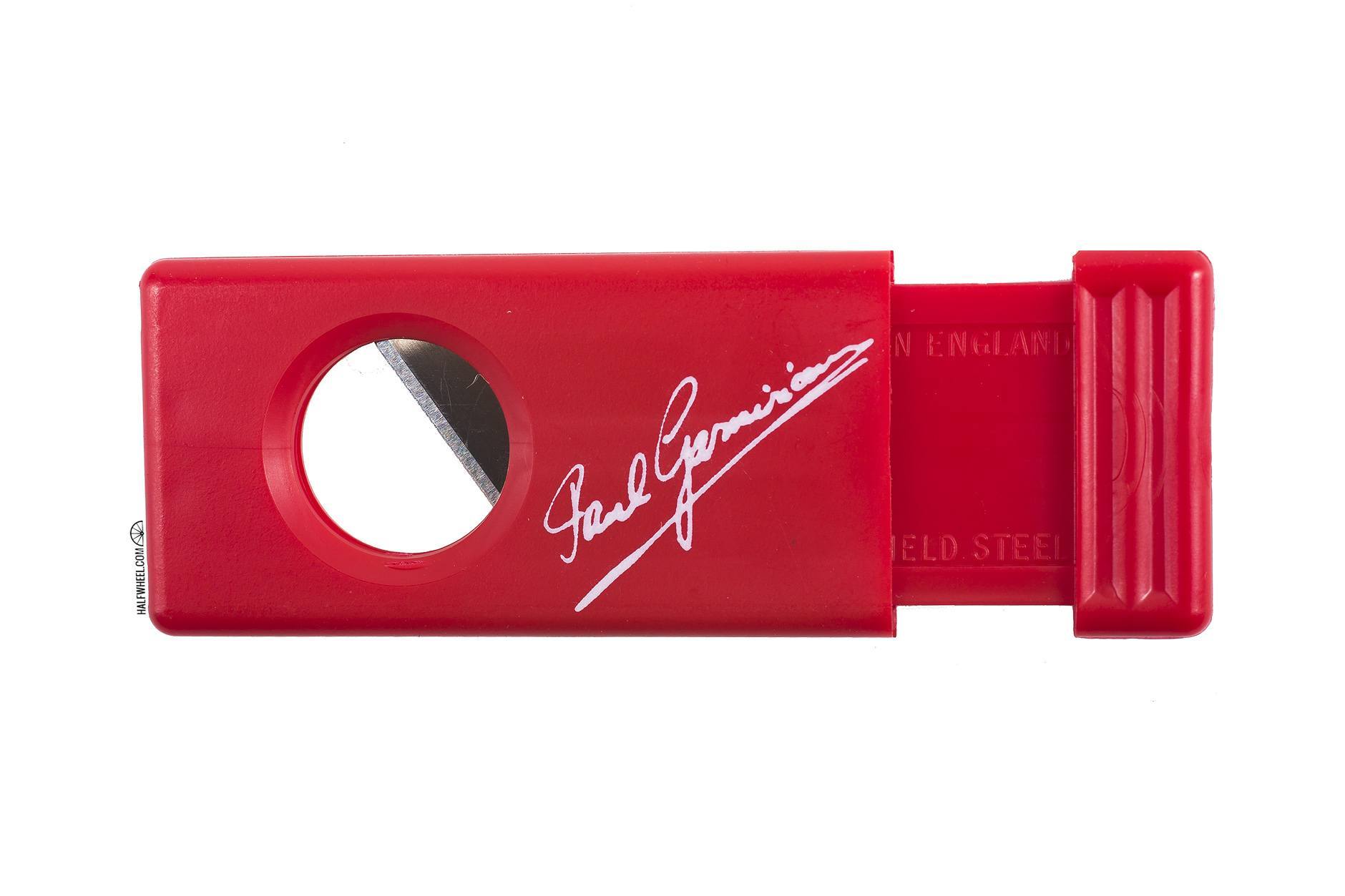Over the years, there have been cigar cutters that have become well-known for their combinations of design, aesthetics and functionality: cutters like the XIKAR Xi, Colibri Quasar Punch and the Davidoff Double Blade Cutter. But close to the top of that list would have to be the Paul Garmirian Super Sheffield Cutter.
While Paul Garmirian introduced his first line of cigars at Georgetown Tobacco in Washington, D.C. in 1990, he also published a book, “The Gourmet Guide to Cigars,” that same year. In 1991, Garmirian began producing cigar accessories, including lighters, leather cases, ashtrays and cigar cutters, including the aforementioned Super Sheffield Cutter.
According to Kevork Garmirian—the son of Paul Garmirian—the Super Sheffield Cutter debuted in 1992 after two years of testing, and there were only 100 cutters produced at a time by Frank Marshal of Precision Engineering in Sheffield, England. Production of the cutters ceased in 1999 after Marshal passed away, but sales of the cutters did not stop officially until 2005.
In an email, Garmirian told halfwheel that only 1,200 total cutters were produced during those seven years.
WHAT IS IT?
The Paul Garmirian Super Sheffield Cutter is a single guillotine cutter capable of cutting cigars up to 52-ring gauge. It was made of an aircraft-grade aluminum body in England, anodized in Holland and the bodies were assembled and riveted together by hand. In a phone conversation, Paul Garmirian told halfwheel that the blade of the cutter was affixed to 1/4 of 1000th of an inch, which refers to the amount of “play” or “jiggle” there is as the blade travels along its track: less motion means straighter and cleaner cuts.
Physically, the Paul Garmirian Super Sheffield Cutter weighs just .5 ounces while measuring 1.25 inches high and .2 inches thick, with a total length of 2.5 inches when closed and 3.5 inches when fully open. The blade was made in Sheffield, England and features an angle similar to the shape of a utility knife.
If you think you’ve seen this cutter but not with a metal body, it’s because there also the Paul Garmirian Cutter. While the blade is similar to the one used in the Super Sheffield Cutter, it is only affixed to 1/1000 of an inch. In addition, the case is made of plastic that is sonic welded together and the opening is slightly smaller, meaning it can only cut cigars up to 48-ring gauge in half. Most notably, that cutter is still in production and retails for $22 each, although it is available in seven different color options.
HOW MUCH DID IT COST?
The Paul Garmirian Super Sheffield Cutters originally retailed for $200 in 1992. We paid $550 for an unused example of the cutter. While they sparingly go on sale, used cutters have sold for similar prices and some cutters have sold for roughly $1,000.
The Paul Garmirian Super Sheffield Cutter was sold in four different finishes: Black, Bronze, Gold and Platinum.
HOW DOES IT WORK?
While they are not exactly the same size, the Paul Garmirian Super Sheffield Cutter is virtually the same to use as the Paul Garmirian cutter. The cutter is quite small when held in my hand—especially my large hand—and the body is made up of two sections: the exterior section includes the opening where the cap is placed, while the blade pulls in and out on a track.
Considering the simple design, it is no surprise that the action of actually cutting a cigar is an extremely simple process: after picking up the cutter, I pull open the section on the right that the blade is attached to, which has a small lip to make it easier to grasp. Pulling that section outwards causes the blade to retreat out of body of the cutter, which in turn opens up the hole where the cigar goes.
The cap of the cigar is then placed in the inverted dome opening and the section of the cutter that includes the blade is pushed closed again in an extremely smooth motion that forces the actual blade itself through the cap of the cigar. As the blade cuts through the cap and comes to the end of its journey, there is no audible click or any other audible signal that the process is complete, although there is a point where the cutter is completely closed and I cannot continue to push any further.
As with the cheaper Paul Garmirian cutter, there is one ingenious feature that really makes the Super Sheffield Cutter stand out. The blade of the cutter does not disappear all the way into the housing; in fact, there is gap of about 1.5mm gap space left. The purpose of this becomes clear after initial use: when you cut a cap, the cut piece of tobacco is actually held in place at the end of the action, allowing you to pluck it out and throw it away at your leisure, instead of having it fall anywhere so that you have to clean it up. This worked nearly every single time I cut with this cutter, regardless of the size of the cap or the type of wrapper I was cutting. It only works with parejos, meaning a torpedo’s tip will fall out of the cutter like normal.
I am right-handed, and I found that the best way for me to hold the cutter in the open position was to have the end closest to the opening rest against my middle finger, leaving my index finger free to add balance and support for the cutting process by resting against the middle of the base of the cutter. I then used my thumb to push the section that the blade is attached to inward to cut the cigar.
While the actual cutting action is extremely smooth, the section of the cutter that the blade is attached to is so stiff that it actually takes two hands to open the cutter: one to hold the body and one to pull out the blade section. This might be fixed by some oil, though I didn’t want to try until after this review was published. In addition, the small size of the cutter meant that I had minor issues at various times with exactly how to hold and cut cigars at the same time, although it is a process that became easier over time.
What Makes It Special?
A lot. If I had to pick just one aspect, it’s that Paul Garmirian set out to make the best cutter possible. There’s not a lot of design briefs that are lucky enough to start that way.
THE GOOD
- The Craftsmanship Stands The Test of Time — While it’s not possible to see a lot of the precision engineering that went into this cutter, even after two decades, this cutter’s build quality stands out. While the small size might look slightly out of place in today’s world, the rest of the cutter’s appearance and functionality is as good as any new cutter being sold today.
- It Just Works — Pretty much every time I picked it up and used this cutter on cigars under 58 ring gauge, I walked away with a great cut. It is truly a use-and-forget product.
- It Is Small & Light — This cutter weighs so little that I was easily able to carry it around in the front pocket of my shirt without even noticing it. In fact, there were multiple times I threw it into the pocket of my shorts or jeans and forgot it was there until I ran into it looking for my car keys.
- Parejo Caps Are Held In Place After Cutting — As mentioned above, every time you cut a cap, the cut piece of tobacco is actually held in place at the end of the action, allowing you to pluck it out and throw it away at your leisure, instead of having it fall anywhere so that you have to clean it up. This worked virtually every time I cut with this cutter.
- A Real Leather Case — When it was originally sold, the price of the cutter included an extremely well-made, real leather case that fits the cutter like a glove and does a wonderful job of protecting it.
THE BAD
- It Is Extremely Difficult To Procure — As noted above, there were not many of these cutters made and most of the cutters that do exist are probably being held—and used—by people who not only know what they have but also have no intention of ever giving them up.
- It Remains Very Expensive — While I don’t have a time machine to find out, at $200 new, this was probably one of the most expensive cutters you could buy in the 1990s. After more than two decades, it remains one of the most expensive cutters you can buy, especially when you remove vintage cutters made out of sterling silver or cutters that use precious metals or gems. I’ve reviewed a lot of pricier cigar cutters, but at $550, this is one of the most expensive cigar cutters I’ve reviewed.
- It’s Tough To Cut Cigars Above 58 Ring Gauge — This is a cutter that was made at a different time and was designed to cut the smaller ring gauges that were prevalent during that time period. As such, cutting any cigar larger than about 58 is an exercise in futility. The main issue is that the opening where the cap of the cigar is placed is just too small to allow the blade to actually cut deeply enough to give decent draws on cigars that large. Even with a 52-ring gauge cigar, the opening is small enough that the cap will not touch the deepest part of the opening. It’s possible to get a useful cut on a 60-ring gauge cigar, but it might require multiple cuts to do so.
- You Have No Options If The Cutter Breaks — These have been out of production for more than two decades and the body was designed in a way that it’s never supposed to be opened back up. If something were to happen to the blade—perhaps someone tried cutting something other than a cigar with one—you are probably out of luck.
THE COMPETITION
You don’t have to look very hard to find the closest competitor to the Paul Garmirian Super Sheffield Cutter since it is sold by the same company: the Paul Garmirian Cigar Cutter ($22). Both cutters feature the same basic design, but they are vastly different when it comes to price and build quality. The Paul Garmirian Cigar Cutter is made with a plastic exterior and feels flimsy compared to the Super Sheffield Cutter. That said, it functions more or less the same other than having a slightly smaller opening.
Both cutters work very well, with the only drawback being their inability to cut large ring gauge cigars. However, if forced to choose between the two, I would take the Super Sheffield Cutter. It’s not because the cuts are any better, they are identical to the naked eye. Simply, I just couldn’t pass up the chance to acquire a Super Sheffield Cutter. It’s been my white whale cigar cutter for quite some time, and it lived up to my lofty expectations. Even if it wasn’t special—rarity, engineering, etc.—it’s a joy to use, but it gets bonus points because of how unique it is. While I found the plastic version to be easier to open, I enjoyed the slightly firmer and more stable cutting motion of the Super Sheffield Cutter.
Additional Competitors
- Dunbarton Tobacco & Trust Guillotina de Saka (Not for Sale) — This is the modern legacy to the Super Sheffield Cutter. Not only does it use a similar single guillotine design, it’s also been engineered in a similar “money is no object, let’s make the best cutter we can” philosophy. Although it is not (yet) for sale, this is a single guillotine cutter that has a 420 stainless steel blade inside of a stainless steel exterior case. It is also made with a steel blade is designed to be easily replaceable by consumers without having to use any special tools and the case features a different-sized opening on each side: one side is designed to cut for cigars up to 48 ring gauge, while the other is designed for cigars of 50 ring gauge and thicker. I have not reviewed this cutter, so I cannot give you an official comparison between the two products yet, but I have used it and can tell you that the Guillotina de Saka works in a very similar way with very similar results compared to the Super Sheffield Cutter. Dunbarton Tobacco & Trust has given some of these cutters away—including at select events—and my money says they will be available for sale at some point. That said, it’s going to be pricey.
- Les Fines Lames Le Tag T135 ($90) — Featuring a similar cutting method compared to the Super Sheffield Cutter, the Le Tag T135 can cut cigars up to 90 ring gauge and features blades made of 420C stainless steel. I have not reviewed this cutter, so I cannot give you a comparison between the two products yet.
- S.T.Dupont Cigar Stand Cutter ($210) — Coming in at about half the price of the Super Sheffield Cutter, but the S.T. Dupont has the added benefit of being able to transform into an extremely useful cigar stand. I would take the Super Sheffield Cutter over this one due to its lighter weight, smaller size and slightly better cuts overall, but the built-in cigar stand and the lower price of the S.T. Dupont make it a close race.
- Siglo Seki Cutter ($180) — Manufactured in Seki, Japan, this cutter is thin enough to fit in a wallet but capable of cutting cigars up to 60-ring gauge. The price also includes a leather pouch that comes in eight different colors. I have not used this cutter, so I cannot give you a comparison between the two products yet.
- Tiffany & Co. 14-Karat Gold Guillotine Cutter ($2,450) — If money is no object, you can spring for this antique cutter from Tiffany that is covered in 14-karat gold. I have not reviewed this cutter, so I cannot give you a comparison between the two products yet. No, this is not the most expensive cigar cutter, nor is it really close to being the most expensive cigar cutter.
- Drew Estate Cigar Bris Tool — This is a discontinued cutter that Drew Estate produced back in the 1990s. It’s a single guillotine cutter with an angled blade, so the functionality is similar to the Paul Garmirian cutters and is part of the inspiration for the Guillotina de Saka cutter. Like the Super Sheffield cutter, it’s extremely difficult to find and good luck getting anyone to give you one of theirs. — Charlie Minato.
SHOULD YOU BUY IT?
Absolutely.
A major disclaimer: whether it’s this cutter, an Elie Bleu humidor or an S.T. Dupont lighter, you don’t need expensive cigar accessories. In fact, they are unlikely to make your cigars taste any better than if you use accessories that are 1/50th the price. Here at halfwheel, we use cigar accessories that range from being the best values to products like this, uber luxuries. We continue to use and recommend the products that work well. Unlike the most expensive cigar cutter I’ve ever reviewed, the Paul Garmirian Super Sheffield Cutters works very well.
So, if you are in a position to buy one of these cutters, I can’t recommend it enough.
I have long had the desire to own one of the legendary Paul Garmirian Super Sheffield Cutters, and after a solid month of using it, I am happy to say that it more than lived up to my high expectations. From the first moment I picked it up and opened the leather case, the cutter exuded class with its combination of simplistic design, small footprint, and ease of use. Of course, all of those things would not matter if it did not actually cut cigars well; thankfully, the Super Sheffield slices through caps like a red-hot knife through butter pretty much every time.
Having said all of that, the Super Sheffield Cutter does have some limitations that cannot be ignored: it is very expensive, it is extremely hard to find, and it is not exactly large ring gauge friendly. The lack of versatility when it comes to being able to cut larger ring gauge cigars would keep it from being my daily cutter—also my fear of losing it—but if I only smoked cigars with a maximum of 58-ring gauge, this could be the cutter I use for the rest of my life. But alas, I have to keep reviewing different cutters.
Note: Since halfwheel launched in 2012, we have started off each new year with a week of reviews that are different from the other parts of the year. Rather than reviewing new cigars, we try to find cigars people might consider a holy grail cigar. This is the first time we’ve had a cigar accessory reviewed as part of Holy Grail Week, but this was Brooks’ longtime white whale cigar cutter, so it fits. You can read more Holy Grail Week reviews by clicking here. — Charlie Minato.

